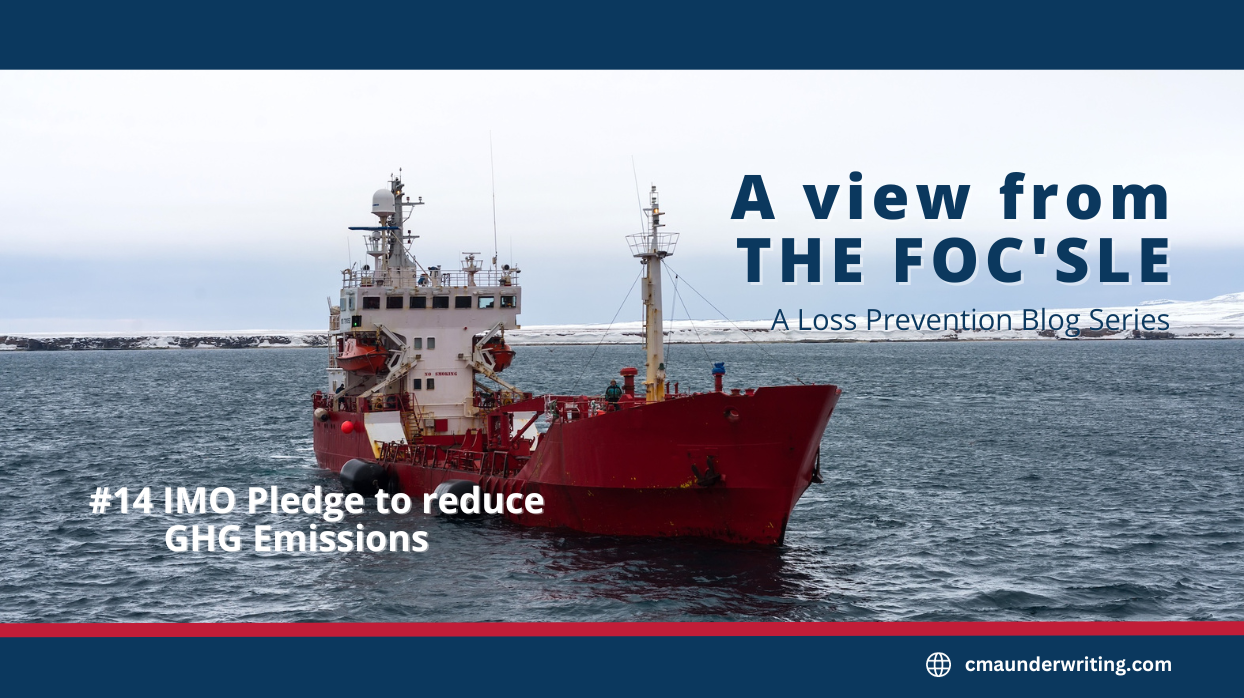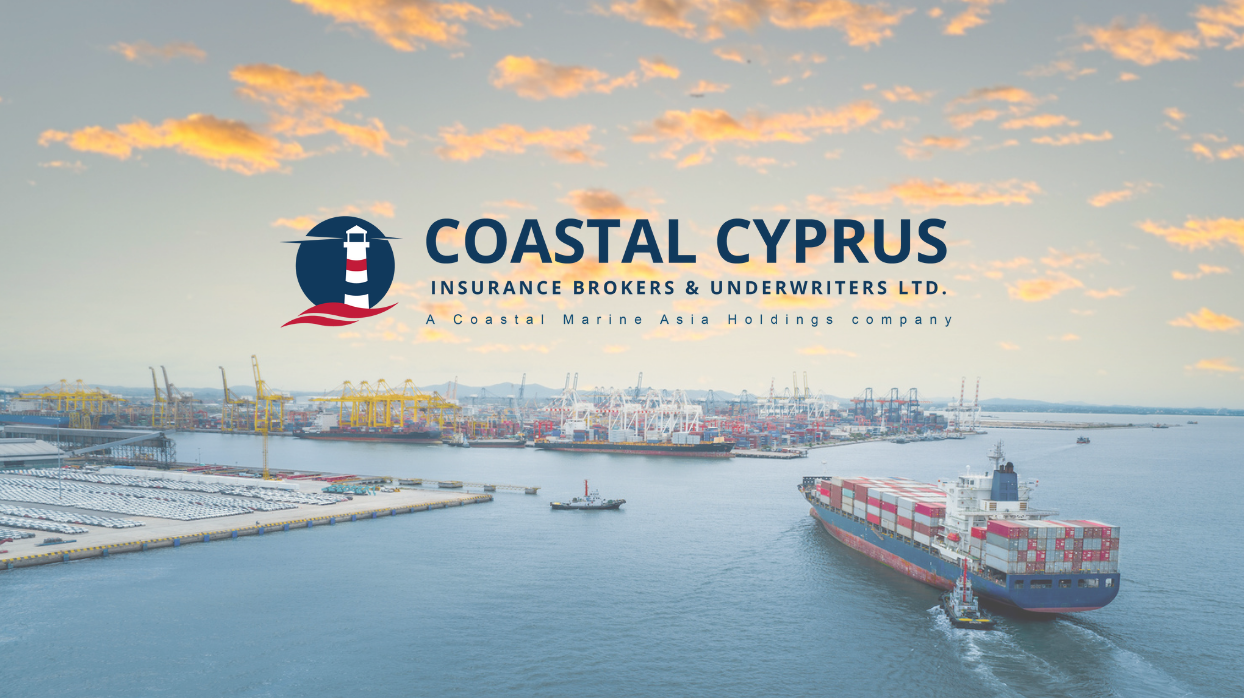
Pledge to Reduce GHG Emissions: A view from the FOC’SLE #14
This time on our blog, what can be the urgent actions needed in response to recent weather patterns, paving the way for a greener maritime future?

Another warm welcome back up here on the Foc’sle, where our ever-chuffing train of thought leads us to the “Deer in the Headlights” syndrome.

Perhaps due to our preoccupation with trying to avoid or avert casualties, we see more examples of this syndrome than would otherwise be the case, but certainly, anyone who has got more than a drop of seawater in their boots has come across it.
Circumstances conspire to present an unfolding ‘incident’ but the crew who are best placed to avert a casualty stare wide-eyed and take no action whilst the worst happens!
Why is this so?
Is the present-day Standards of Training, Certification, and Watchkeeping (STCW) training and examination process required by the IMO sufficient?
Is the pervasive atmosphere of Company Regulation as enshrined in the vessels’ Safety Management System somehow defective?
Is the ship-to-shore communication route appropriate?
We should probably look at the aviation industry for some pointers.
Training for emergencies is very intensive and repetitive. Flight crews are required to undergo frequent refresher training and “line checks” to ensure that their responses to emergencies are as automatic and effective as humanly possible. Simulators are widely used for this.
Communications are carefully nurtured, with the pilot monitoring person duty-bound to let the pilot flying know loud and clear if he is doing something wrong, irrespective of rank. The seniority gradient is also considered in scheduling crews.
(Can one imagine a newly certificated 3rd Mate telling a crusty old Captain he is doing the wrong thing? Hardly!)
But perhaps the reason for this syndrome is all of the above and none of the above.
Training and examinations appear to me to be reasonably realistic and sufficiently demanding, at least in the major maritime nations.
For the inclusiveness of the Company Regulations, there is a benchmark against which these are constructed and administered by the Flag State (or Recognised Organisation) of the individual vessel/company so, it would be unusual to find defective regulations.
So now we come to communication, and there is a good argument to be made to state that here is where the heart of the matter lies.
Some suggestions are perhaps appropriate at this point, and your Lookout Man would be delighted to have some feedback, or even a good old-fashioned ‘room for discussion’, from readers!
My neighbour was a 747 Captain and one morning I met him looking very shaken. The previous night he had crashed his 747 into the Hong Kong airport terminal building and killed 5,000 people, on the simulator!
Guaranteed he will never make the same errors in real life!
In the late 1950’s and 60’s, there was a plethora of “Radar assisted collisions”. More intensive training has made these almost a thing of the past. Now we have “Electronic Chart Display and Information System” (ECDIS) assisted groundings” and the same remedy is available and will be effective.
2. By default, Company regulations assign authority and responsibility to certain crew members. This is as it should be, as there cannot be an authority without responsibility. But how often have you come across an incident (or worse) where the person to whom that authority or responsibility belonged deferred to someone who had none of these assets because he feared for his job? “Do as I tell you or you will be fired, and if it goes wrong, I am waterproof.”
3. This Regulatory issue is exacerbated to a certain extent by the ease by which the crew onboard can speak with shore personnel. If, for example, a Master faced certain problems and had no easy way to call ‘the office’, he would be forced to solve the problem himself and take full responsibility for it.
This is certainly not to say throw the sat phone overboard but is a case where the Master, or Chief Engineer, should be made to feel that they actually were responsible for making the right decisions, and that ‘the office’ would support them in that, not dictate to them.
If ‘the office’ feels uncomfortable in giving this power to their Masters, or Chiefs, then they have probably hired the wrong guys.
I sailed with a well-known Hong Kong shipping company that gave their masters wide discretion in voyage decision-making. Their philosophy was “We would like to make a profit on this voyage if we can, but whatever you do, don’t break the ship”.
With these suggestions, I believe that our industry can do much more to reduce the frequency and severity of casualties if a more thought-provoking use of simulators is made. Another would be encouraging senior officers on board to take much more ‘ownership’ of their vessels and the issues which inevitably arise.
Until our next night watch,
The Lookout Man

Capt. Jon began his seafaring career in 1960. He spent 11 Years in Taiwan running US Lines and then moved to Singapore in 1980 where he eventually joined Matthews Daniel in Singapore in 1989 and becoming Far East Managing Director. Capt. Jon started his own company Elliott Associates Pte Ltd after his retirement to bring an enhanced level of loss prevention to the Asian Marine industry. Capt. Jon is a consultant to Coastal Marine Asia Holdings Limited in our Loss Prevention Division providing technical guidance to our underwriters, whilst arranging crew and management loss prevention training for some of our insureds.

This time on our blog, what can be the urgent actions needed in response to recent weather patterns, paving the way for a greener maritime future?

Coastal Marine announces the appointment of Simon Stonehouse as Director of Coastal Marine Asia Holdings, a strategic move signalling the company’s commitment to strengthening and expanding its marine business lines.

Coastal Marine Acquires LBY Reinsurance, Rebrands to Coastal Cyprus Insurance Brokers & Underwriters Limited, elevating service and specialization in marine hull reinsurance with Director Laurent Biehly at the helm.

No Comments